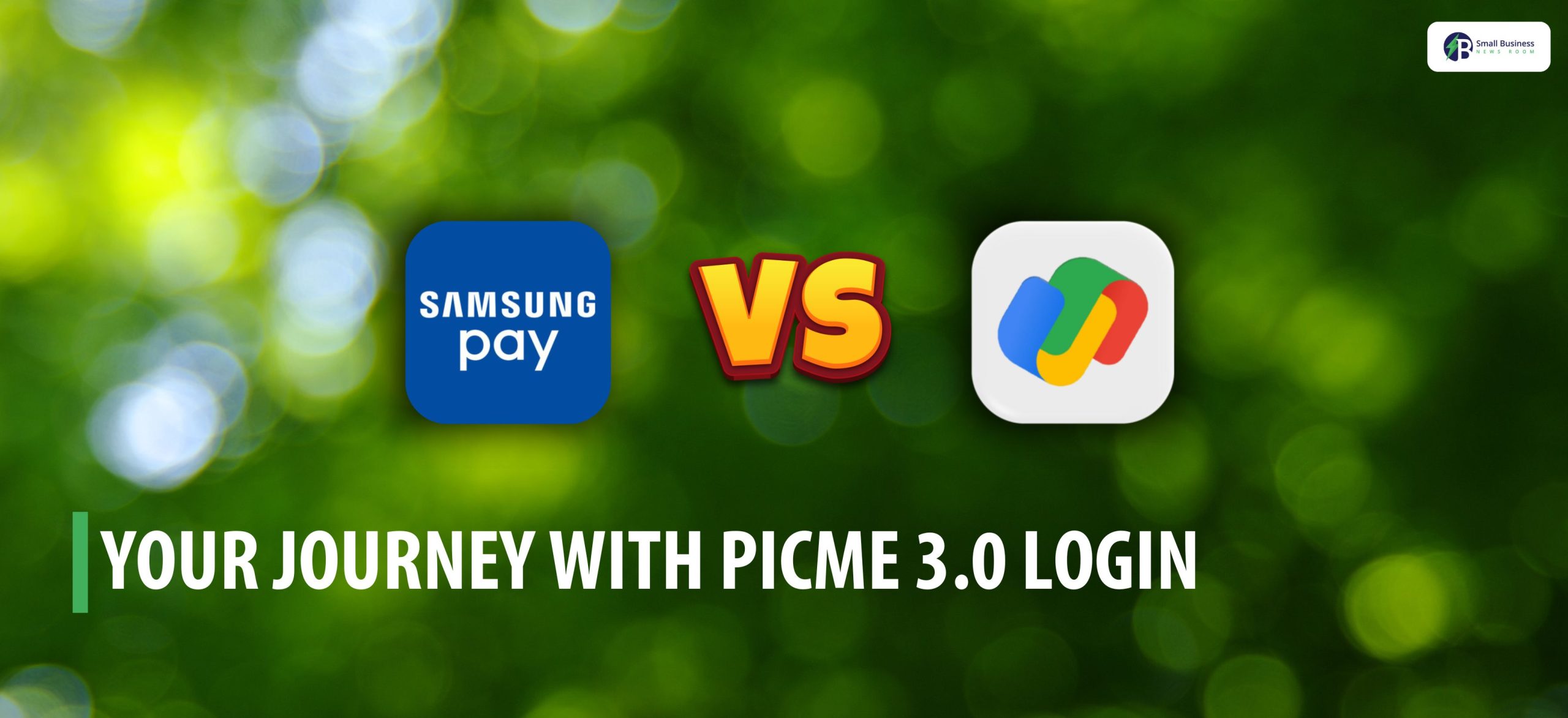Table Of Contents
- What Is Samsung Pay and Google Pay?
- Samsung Pay vs Google Pay: Device Compatibility
- Payment Methods and Features
- Contactless payments
- Rewards and Loyalty
- Security
- Samsung Wallet and Google Pay: Extra Benefits
- Google Pay Features
- Samsung Wallet Features
- Customer Experience and Transaction Speed
- Google Wallet and Samsung Pay: Online Shopping and Online Payments
- Samsung Pay or Google Pay: What Consumers Prefer
- Next, Which One Is Best for Small Businesses?
- How to Accept Samsung Pay and Google Pay in Your Business
Samsung Pay vs Google Pay: Which One’s Better for Your Small Business?
Today, in the age of the digital revolution, your phone is no longer just for selfies or looking at social media — it’s a powerful wallet.
For entrepreneurs, the Samsung Pay vs. Google Pay battle is more pertinent than you might think.
Cash is quickly becoming a thing of the past. No one can deny the fact!
Digital wallets are transforming the way consumers make purchases. If you’re a small business owner, it’s essential to understand how these payment systems can impact your business, from faster checkout to increased customer convenience.
In this guide, we compare Google Pay and Samsung Pay to help you decide which platform is best suited for your customers — and perhaps even for yourself. We’ll also look at how both of them benefit your growth as a small business.
What Is Samsung Pay and Google Pay?
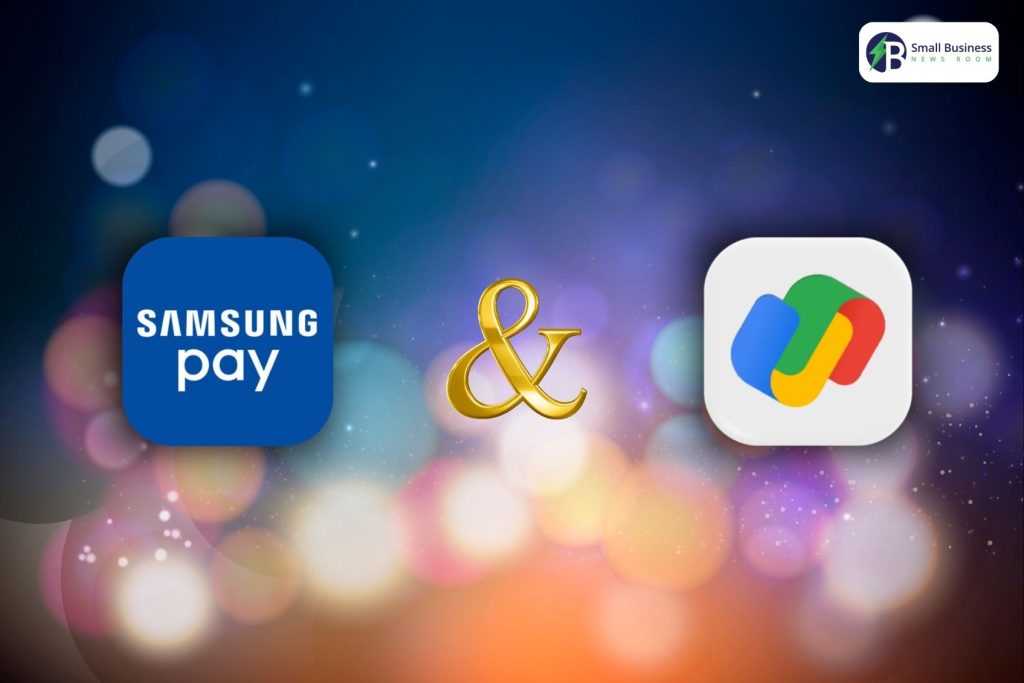
Before we dive into the head-to-head, just a brief reminder of what these two websites are.
Google Pay (formerly Android Pay) is Google’s digital wallet. You can save credit and debit cards, pay in-store without touching the screen, pay online, and even send money to your friends.
Samsung Pay, on the other hand, is Samsung’s proprietary mobile payment program designed for use on Samsung phones. It also has tap-and-go payment and allows for the storage of loyalty cards, coupons, and even membership cards.
Both are highly sought after, especially by small businesses that desire to offer faster and more secure checkout options.
Samsung Pay vs Google Pay: Device Compatibility
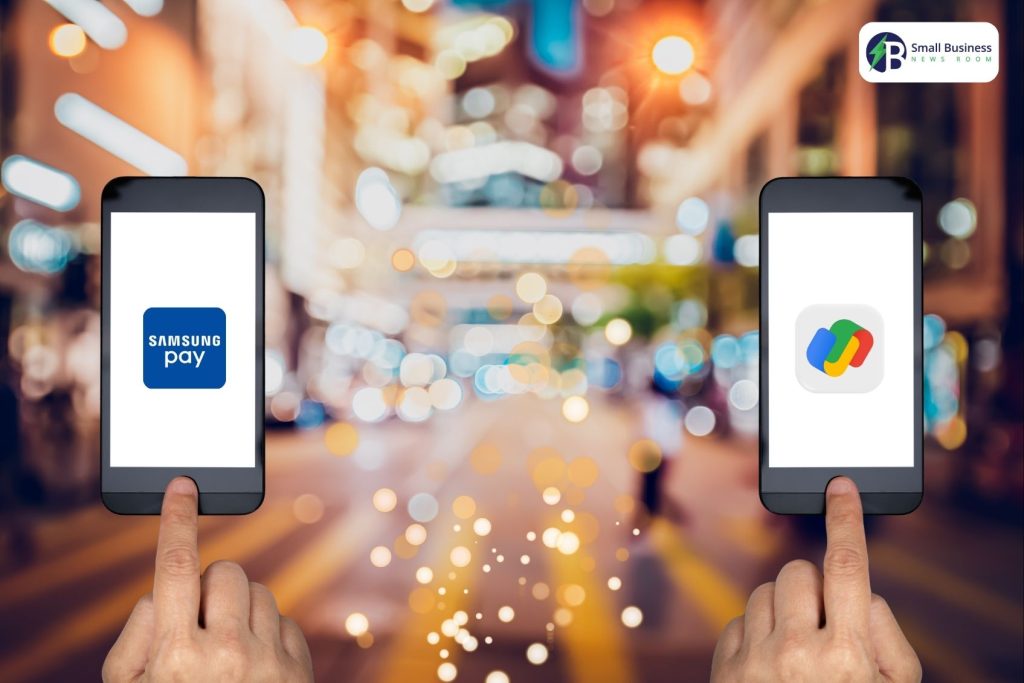
If you wonder which wallet your customer base will be using, the answer is device compatibility.
Google Pay can be used on any Android device with Android 5.0 (Lollipop) or above. Those are Samsung, Google Pixel, and OnePlus.
Samsung Pay can only be used on Samsung phones and smartwatches; however, it can also be used on select non-Samsung devices. If the customer does not own a Samsung phone or smartwatch, they simply cannot use it.
So on the reach front, Google Pay wins this round hands down. For small businesses, especially those with a diversified clientele, greater compatibility can be a big positive.
Tip: If a POS system or a payment system using QR codes is used, ensure it is compatible with Samsung Wallet or Google Pay to provide customers with more convenience.
Payment Methods and Features
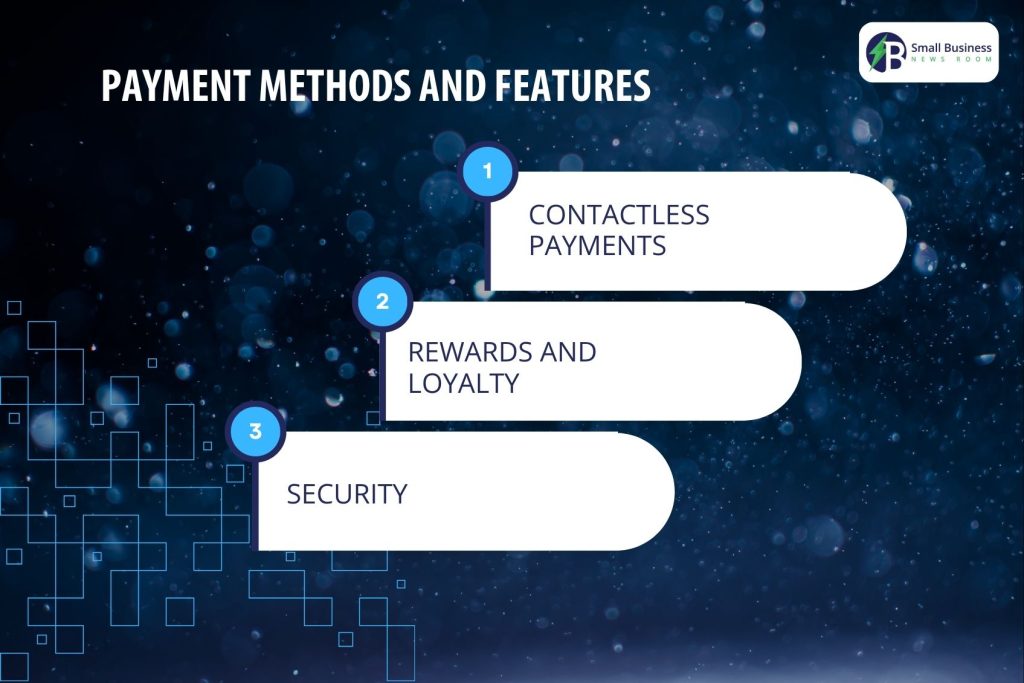
Let’s explore how these two wallets handle payments and the services they offer.
Contactless payments
Both Google Pay and Samsung Pay facilitate NFC (Near Field Communication) to make tap-and-go payments.
But here’s where Samsung Pay had a sneaky trick up its sleeve in the past — Magnetic Secure Transmission, or commonly known as MST.
MST-enabled Samsung phones emulate the magnetic stripe on a credit card, so they could be used with older card readers. Newer Samsung phones no longer have MST, getting closer to Google Wallet vs Samsung Pay in terms of functionality.
Rewards and Loyalty
Samsung Pay features Samsung Rewards, which reward users with points for every transaction. They can be spent on buying gift cards and discounts, and also on entering prize draws.
Google Pay does not have a universal rewards program, but does offer retailer-specific rewards program integration capabilities. So your business can integrate your own rewards program with Google Pay, which is great for customer loyalty and brand building.
Security
Both websites are extremely secure, using tokenisation and biometric logon (e.g., fingerprints or face scanning) to protect users’ information.
As a small business, breathe easy — accepting payments from either Google Pay or Samsung Pay will expose your business to no security risks beyond those it would face from standard credit card processing.
Samsung Wallet and Google Pay: Extra Benefits
Though both websites are fine with payments, their other features may make you pick them, especially if you are thinking about how they can help your business activities.
Google Pay Features
First comes the Google Pay Business App. This enables small business owners to accept payments directly.
Second, we have the Google Pay API. This is best suited for e-commerce businesses that want to deploy frictionless checkout experiences.
Third, there is a chance of peer-to-peer Payments. Google Pay allows money to be sent and received, a convenient feature for sole proprietors, side hustlers, and freelancers.
Samsung Wallet Features
Samsung also recently renamed Samsung Pay to Samsung Wallet, consolidating payments, digital keys, ID cards, boarding passes for air travel, and more into a single place.
It is a one-stop solution ideal for you if you’re a busy entrepreneur always on the go and don’t want to carry extra things.
But this may not necessarily serve your customers unless they are deeply rooted in the Samsung world.
Customer Experience and Transaction Speed
Haste makes waste in the checkout line, however. No one wants to wait in line. Both Google Pay and Samsung Pay have lightning-fast payments. Tap and go. But the real benefit is customer adoption.
More people will be familiar with Google Pay simply because it is compatible with more devices. That means fewer questions, less confusion, and a more seamless experience at your checkout.
For small businesses looking to shift lines efficiently and provide a seamless payment experience, Google Pay’s extensive usage is an obvious advantage.
Google Wallet and Samsung Pay: Online Shopping and Online Payments
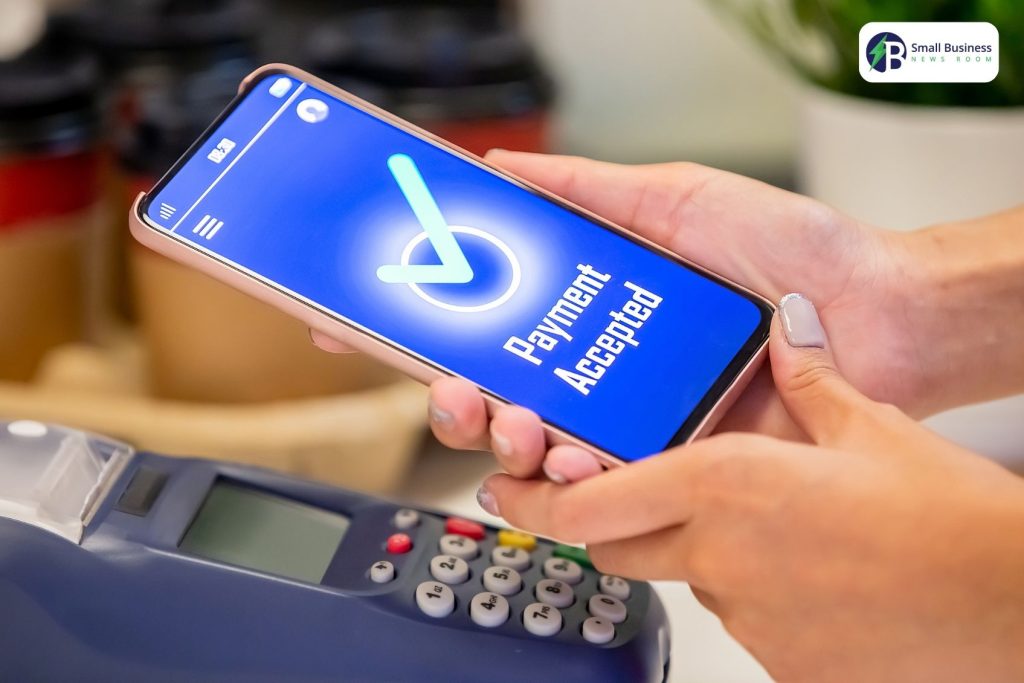
If you own a website or sell physical products online, you will want to know which wallet is making the most sales.
Google Pay is supported across all the big e-commerce sites like Shopify, WooCommerce, and Magento. Customers can check out in just a few clicks using their stored Google account login credentials.
Samsung Pay is also somewhat restricted in this area. It’s largely optimized for use in-store, and online shopping support is retailer- and country-specific.
To brick-and-mortar retailers and online merchants, this disparity makes a difference. Google Pay’s presence online can lower cart abandonment rates, an important driver of revenue growth.
Samsung Pay or Google Pay: What Consumers Prefer
Let us just glance at statistics in real life to see what individuals desire:
- According to Statista (2024), Google Pay had around 150 million users globally, while Samsung Pay had around 80 million.
- In India, which boasts one of the world’s fastest-growing digital payments ecosystems, Google Pay leads the charge, particularly among small merchants and frequent UPI users.
- In South Korea and the United States, Samsung Pay enjoys a high user base as a result of device popularity and local brand loyalty.
So really, it is a matter of your target audience. Are your customers Samsung buffs, or are they a cross-section of Android manufacturers? The larger the market, the more value you get out of implementing Google Pay.
Next, Which One Is Best for Small Businesses?
Let’s sum it up:
| Feature | Google Pay | Samsung Pay |
| Device Compatibility | Android-wide | Only Samsung |
| Rewards Program | Via retailers | Samsung Rewards |
| Online Payments | Strong support | Limited |
| Integration with POS | Widely supported | Supported but less common |
| Security | High | High |
| Customer Adoption | Higher globally | Strong in select markets |
| Ideal For | Small businesses, e-commerce, freelancers | Samsung-focused businesses, loyal Samsung users |
Verdict: If you are an entrepreneur who requires the utmost flexibility, Google Pay is the way to go. It is supported on more devices, is more integrated with online stores, and offers broader customer base coverage.
But if your business serves mostly Samsung users or if you must offer reward incentives, Samsung Pay is still a viable choice.
How to Accept Samsung Pay and Google Pay in Your Business
Ready to begin taking mobile wallet payments? It’s simpler than you might have thought:
- Test your POS terminal – Make sure it can accept NFC payments.
- Software update – A software update is needed in most terminals to facilitate digital wallets.
- Display signage – Let your customers know that you accept Samsung Pay vs Google Pay. A small sticker makes a big difference!
- Train staff – Provide a brief training session so that all staff members are aware of how to support customers with mobile payments.
Read More:






